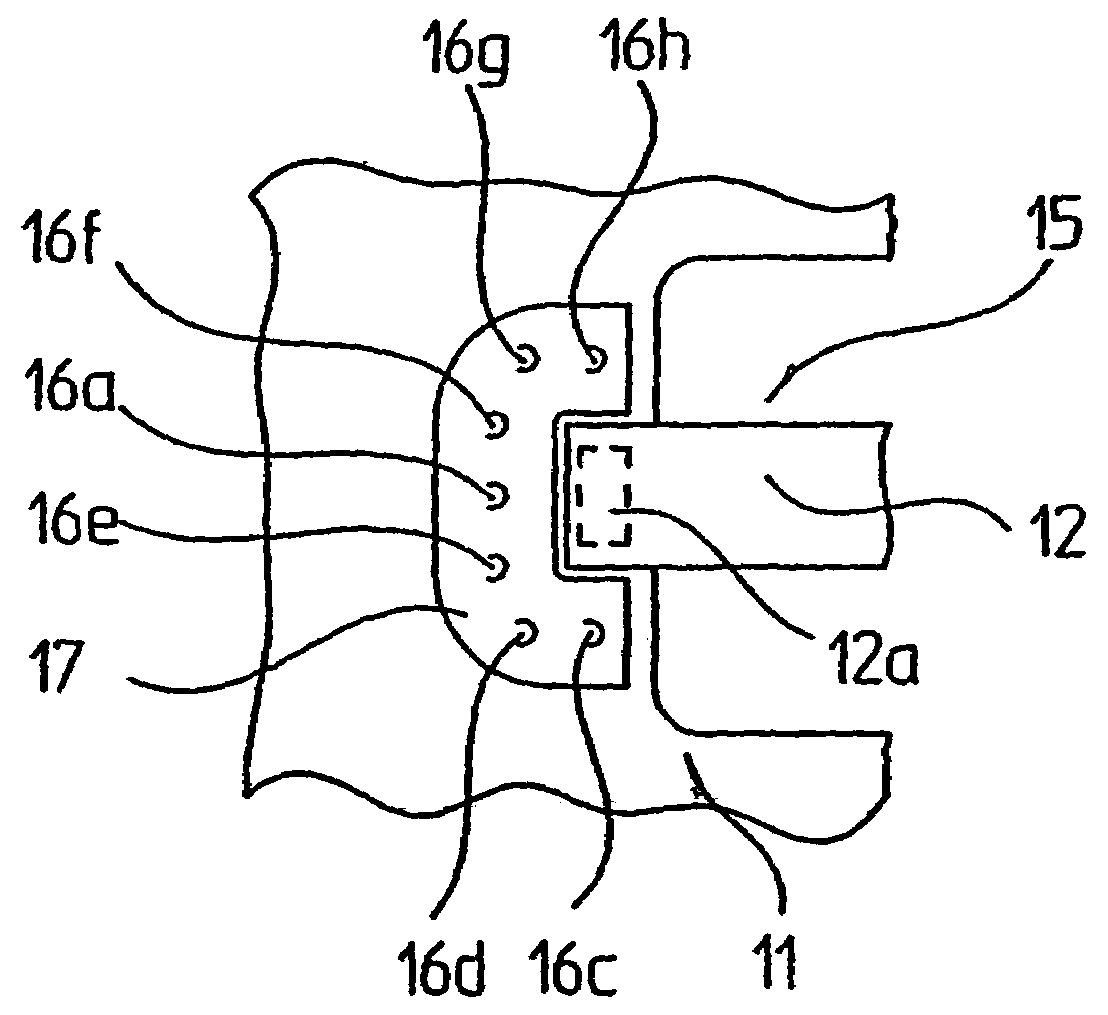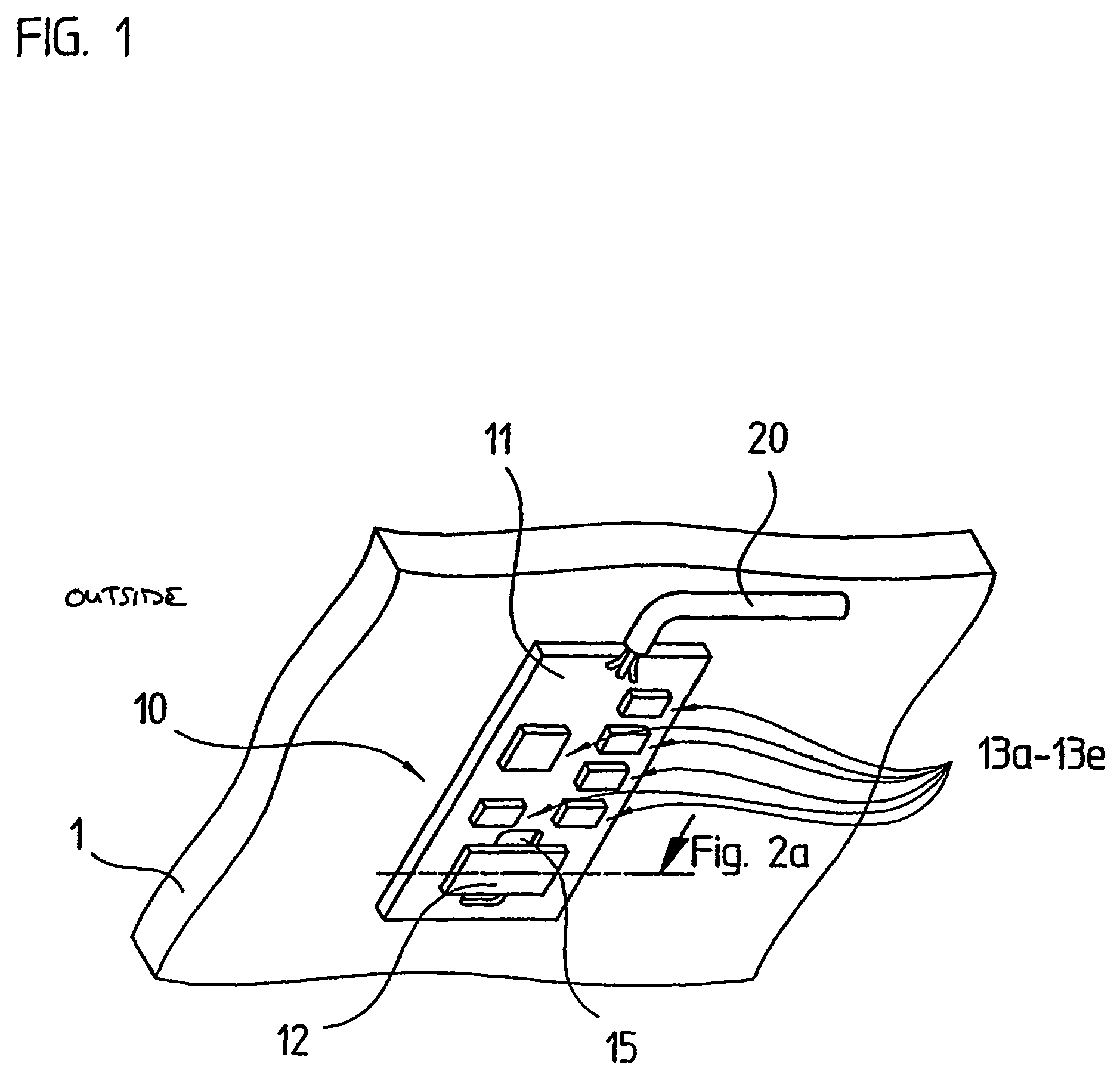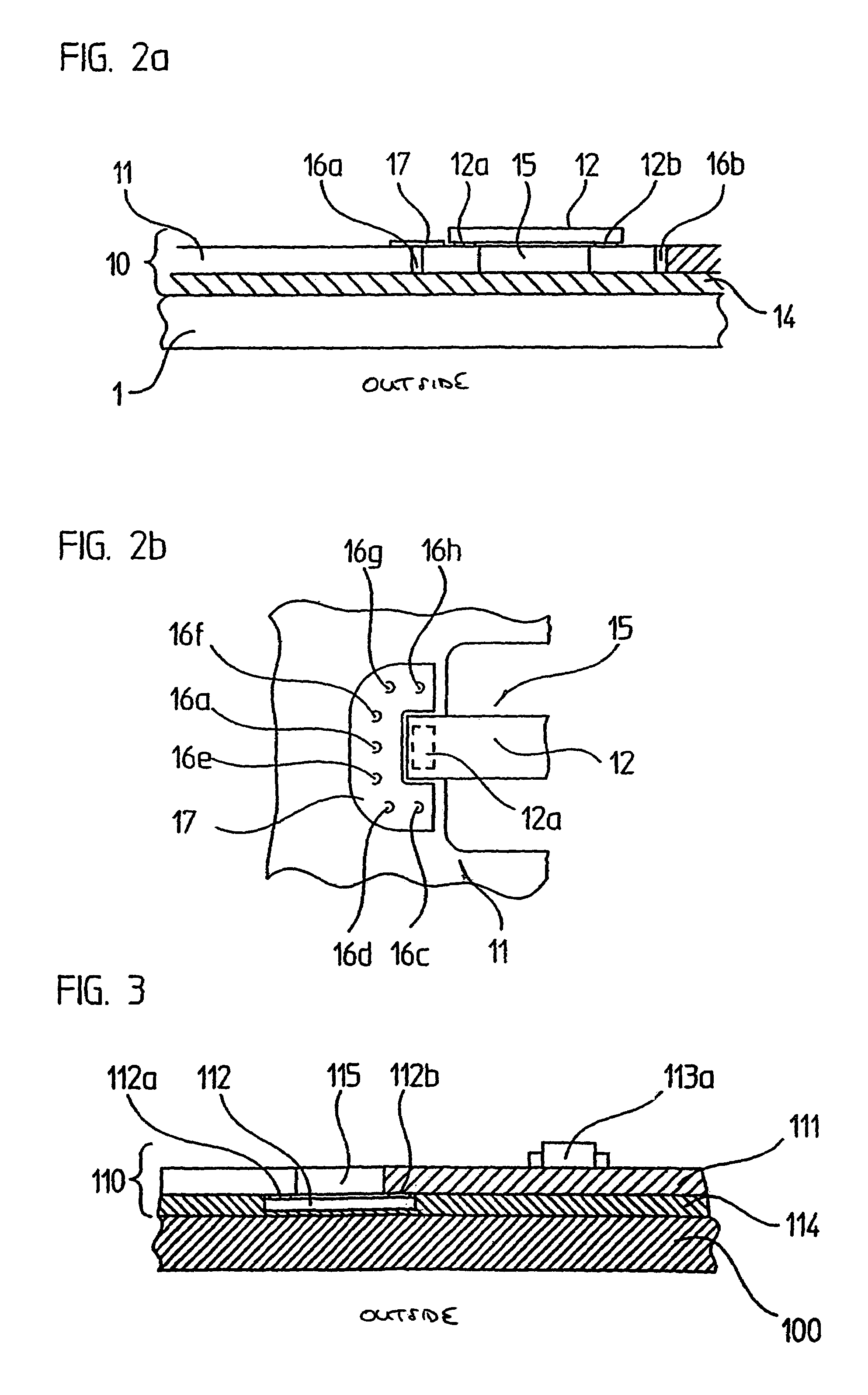Sensor arrangement
a sensor and arrangement technology, applied in the field of sensor systems, can solve the problems of large investment in sensor technology and overall error, and achieve the effect of simple construction
- Summary
- Abstract
- Description
- Claims
- Application Information
AI Technical Summary
Benefits of technology
Problems solved by technology
Method used
Image
Examples
Embodiment Construction
[0016]FIG. 1 illustrates a part of the inside of a motor vehicle windshield 1, which, in this exemplary embodiment, is used as a supporting surface and in which fogging is to be prevented. Sensor system 10 is mounted on the side of motor-vehicle windshield 1 facing the passenger compartment. FIG. 1 also illustrates a first example embodiment of such a sensor system. The output signals from sensor system 10 are fed via a connecting cable 20 to a controlled motor-vehicle air-conditioning system. On the basis of the delivered humidity-dependent sensor signals, the air-conditioning system prevents the inside of motor-vehicle windshield 1 from fogging and, thus, a potential sight obscuration. For this reason, it is possible to vary the heating temperature and / or the ventilation flow rate in a defined manner, via the motor-vehicle air-conditioning system.
[0017]Using sensor system 10 according to the present invention, it is merely the relative air humidity that is determined on that side ...
PUM
| Property | Measurement | Unit |
|---|---|---|
| Temperature | aaaaa | aaaaa |
| Temperature | aaaaa | aaaaa |
| Length | aaaaa | aaaaa |
Abstract
Description
Claims
Application Information
 Login to View More
Login to View More - R&D
- Intellectual Property
- Life Sciences
- Materials
- Tech Scout
- Unparalleled Data Quality
- Higher Quality Content
- 60% Fewer Hallucinations
Browse by: Latest US Patents, China's latest patents, Technical Efficacy Thesaurus, Application Domain, Technology Topic, Popular Technical Reports.
© 2025 PatSnap. All rights reserved.Legal|Privacy policy|Modern Slavery Act Transparency Statement|Sitemap|About US| Contact US: help@patsnap.com



